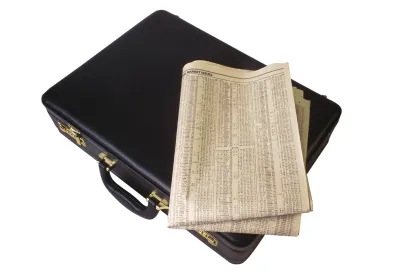Interim regulations will phase out injection into high-quality aquifers pending development of permanent regulations.
On April 2, the California Department of Conservation’s Division of Oil, Gas and Geothermal Resources (DOGGR) issued a notice of proposed emergency rulemaking as part of the state’s efforts to update its Class II Underground Injection Control Program. The proposed rules give deadlines by which operators must cease injection of oil and gas wastewater into “protected” aquifers (i.e., those with a total dissolved solids (TDS) concentration of less than 10,000 mg/L). The deadlines are based on (1) the TDS concentration in the protected aquifer and (2) whether the protected aquifer is in a hydrocarbon-producing zone.
Background
California’s Class II Underground Injection Control Program was developed under the Safe Drinking Water Act (SDWA) to regulate wells used both to dispose of waste oil and gas production fluids and to increase hydrocarbon recovery. The program protects high-quality groundwater sources by prohibiting underground injection wells in the zone of “protected” aquifers. The US Environmental Protection Agency (EPA) may also waive protection of an aquifer by categorizing it as exempt.
Under a 1982 memorandum of agreement, EPA delegated control over the program to California. Recently, EPA and California state legislators have asserted that the California agencies in charge of the program, DOGGR, and the State Water Resources Control Board (Water Board) have not been adequately overseeing its implementation. Among other things, they accuse DOGGR of allowing injection wells in aquifers that should be protected under the SDWA.
The California agencies have since pledged to revise the Class II well regulatory program. On March 9, EPA gave DOGGR and the Water Board a schedule of requirements with deadlines for achieving full compliance with the SDWA. (See Morgan Lewis’s previous LawFlash, “California’s Class II Underground Injection Wells Subject to Increased Scrutiny,” for further details.) DOGGR’s April 2 notice of emergency rulemaking represents the first step toward compliance with EPA’s requirements.
The Proposed Emergency Rules for Well Closures
The proposed emergency rules set forth the following deadlines for operators to cease using Class II underground injection wells in protected aquifers:
In a non-hydrocarbon-producing zone where the groundwater has less than 3,000 mg/L TDS, injection must cease by October 15, 2015, unless there is an exemption for that aquifer or aquifer portion where the injection is occurring.
In a non-hydrocarbon-producing zone where the groundwater has between 3,000 and 10,000 mg/L TDS, injection must cease by February 15, 2017, unless there is an exemption for that aquifer or aquifer portion where the injection is occurring.
In a hydrocarbon-producing zone where the groundwater has less than 10,000 mg/L TDS, injection must cease by February 15, 2017, unless there is an exemption for that aquifer or aquifer portion where the injection is occurring.
For the 11 aquifers historically treated as exempt (which are listed in the proposed rules), injection must cease by December 31, 2016, unless EPA independently determines that the aquifer or aquifer portion where the injection is occurring qualifies for an exemption.
Stakeholders will have a brief opportunity to submit comments before these rules go into effect on April 20, 2015.
Upcoming Deadlines
The California agencies must initiate permanent rules for closing Class II wells in protected aquifers by June 1, 2015, with final implementation by April 30, 2016. DOGGR and the Water Board must also submit a plan for broader revisions to the Class II program to EPA by July 15, 2015, including both rulemaking and nonrulemaking steps. The initial full regulatory program revision is due by September 30, 2016, with complete revisions due by September 2018.
Conclusion
These proposed rules are the first in what will be a series of changes to California’s Class II injection program. EPA has made it clear that it will closely monitor California’s SDWA compliance as DOGGR and the Water Board revise their regulatory program. Oil and gas developers should expect to face additional, more stringent rules in the near future as these changes go into effect.




 />i
/>i

